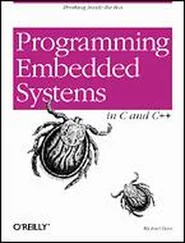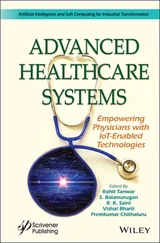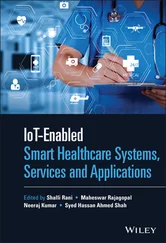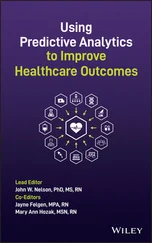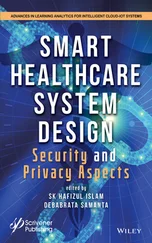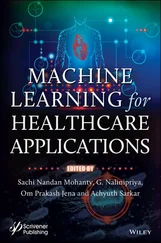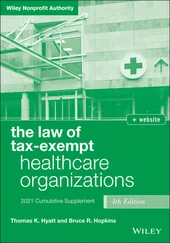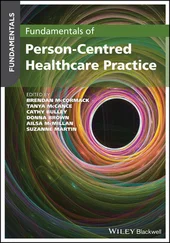1 Cover
2 Title Page Series Editor Jean-Charles Pomerol
3 Copyright First published 2022 in Great Britain and the United States by ISTE Ltd and John Wiley & Sons, Inc. Apart from any fair dealing for the purposes of research or private study, or criticism or review, as permitted under the Copyright, Designs and Patents Act 1988, this publication may only be reproduced, stored or transmitted, in any form or by any means, with the prior permission in writing of the publishers, or in the case of reprographic reproduction in accordance with the terms and licenses issued by the CLA. Enquiries concerning reproduction outside these terms should be sent to the publishers at the undermentioned address: ISTE Ltd 27-37 St George’s Road London SW19 4EU UK www.iste.co.uk John Wiley & Sons, Inc. 111 River Street Hoboken, NJ 07030 USA www.wiley.com © ISTE Ltd 2022 The rights of Sondès Chaabane, Etienne Cousein and Philippe Wieser to be identified as the authors of this work have been asserted by them in accordance with the Copyright, Designs and Patents Act 1988. Any opinions, findings, and conclusions or recommendations expressed in this material are those of the author(s), contributor(s) or editor(s) and do not necessarily reflect the views of ISTE Group. Library of Congress Control Number: 2021951467 British Library Cataloguing-in-Publication Data A CIP record for this book is available from the British Library ISBN 978-1-78630-799-6
4 Foreword
5 Preface
6 PART 1: Optimization and Simulation of Healthcare Systems
Summary of Contributions – Part 1
1 Towards a Prototype for the Strategic Recomputing of Schedules in Home Care Services
1.1. Introduction 1.2. Literature review 1.3. Description of the problem 1.4. Resolution method 1.5. Presentation of the prototype 1.6. Tests and results 1.7. Conclusion and perspectives 1.8. References 2 Home Healthcare Scheduling Activities2.1. Introduction 2.2. State of the art 2.3. Description of the proposed approach 2.4. Experiments and results 2.5. Conclusions and perspectives 2.6. References 3 Optimal Sizing of an Automated Dispensing Cabinet Under Adjacency Constraints3.1. Introduction 3.2. Problem statement 3.3. Mathematical formulation 3.4. Application example 3.5. Conclusion 3.6. References 4 Validation of an Automated and Targeted Pharmaceutical Analysis Tool at the CHU de Liège4.1. Introduction 4.2. Methods 4.3. Results 4.4. Discussion and conclusion 4.5. References 5 Simulation of Countermeasures in the Face of Covid-19 Using a Linear Compartmental Model5.1. Introduction 5.2. The compartmental model 5.3. A linear SIR model 5.4. Results 5.5. Conclusion 5.6. References
7 PART 2: Digital and New Technologies for Health Services Summary of Contributions – Part 2 6 Towards a New Classification of Medical Procedures in Belgium6.1. Introduction 6.2. Methodology 6.3. Results 6.4. Discussion 6.5. Conclusion 6.6. References 7 Digital Toolkit for the Ergonomic Evaluation of Workstations7.1. Introduction 7.2. ProcSim and ergonomics 7.3. Ergonomic assessment process 7.4. Conclusion 7.5. References 8 Simulation on an RFID Interactive Tabletop with Tangible Objects of Future Working Conditions: Prospects for Implementation in the Hospital Sector8.1. Introduction 8.2. State-of-the-art on the simulation of future working conditions 8.3. Proposal for a simulator on an interactive tabletop 8.4. Development of a first version of a simulator on an interactive tabletop 8.5. Application opportunities in the healthcare industry 8.6. Conclusion and perspectives in the healthcare industry 8.7. Acknowledgments 8.8. References 9 Robotic Geriatric Assistant: A Pilot Assessment in a Real-world Hospital9.1. Introduction 9.2. Geriatric assessment: from needs to the proposed solution 9.3. Methodological approach: living lab approach 9.4. Pilot assessment 9.5. Conclusion 9.6. Acknowledgments 9.7. References 10 Perspectives on the Patient Experience (PX) of People with Disabilities in the Digital Age: From UX to Px10.1. Introduction 10.2. State-of-the-art on Patient experience (PX) 10.3. Research methodology and proposal 10.4. Illustrations relating to the “user research” phase of the methodological framework 10.5. Case study: digital care journey of a patient with a disability 10.6. Conclusion 10.7. References
8 PART 3: Change Management and Organizational Innovations Summary of Contributions – Part 3 11 Jointly Improving the Experience of All Stakeholders in Hospital 4.0: The ICSSURP Initiative11.1. Introduction 11.2. Digital transformation to Hospital 4.0 11.3. Essential qualities of information systems of Hospital 4.0 11.4. Towards a joint security, safety, usability, resilience and performance engineering initiative (ICSSURP) 11.5. Conclusion and perspectives 11.6. References 12 A Tool-based Approach to Analyze Operating Room Schedule Execution: Application to Online Management12.1. Introduction 12.2. Methodology used to generate our approach 12.3. Current version of the proposed tool-based approach 12.4. Applied example of our tool-based approach at the Centre Hospitalier de Narbonne 12.5. Conclusion and perspectives 12.6. References 13 Planning Patient Journeys in Outpatient Hospitals to Support the Ambulatory Shift13.1. Introduction 13.2. Background and state-of-the-art methods 13.3. State-of-the-art and field of application 13.4. Contribution 13.5. Discussion and perspectives 13.6. Conclusion 13.7. References 14 Treatment Protocols Generated by Machine Learning: Putting a Case Study of Hospitalization at Home into Perspective14.1. Introduction 14.2. Context and perspective 14.3. The contribution of protocolization 14.4. Study and proposed methodology 14.5. Conclusion 14.6. References 15 Resilience of Healthcare Teams: Case Study of Two Cardiology Intensive Care Units15.1. Introduction 15.2. Theoretical framework 15.3. Research methodology 15.4. Research results 15.5. Discussion 15.6. Conclusion 15.7. References
9 Conclusion and Perspectives
10 Glossary
11 List of Authors
12 Index
13 End User License Agreement
1 Chapter 1 Table 1.1.Numerical results
2 Chapter 2 Table 2.1.Results and experiments Table 2.2.Case of rescheduling with disruptions
3 Chapter 3 Table 3.1.Incompatibility matrix I after binarization (y = 0.25)
4 Chapter 4 Table 4.1.Comparison of pharmaceutical validations with or without the computer...
5 Chapter 5 Table 5.1.Scenarios for mainland France (65 million inhabitants) Table 5.2.Scenarios for the AURA region (8 million inhabitants)
6 Chapter 6 Table 6.1.NPS ATMC V0, medico-surgical technical procedures classified by speci... Table 6.2.An example of pre-standardized terms prepared by DESULB Table 6.3.An example of the pre-validator expert’s contribution to the standard... Table 6.4.Example of matching with ICHI Table 6.5.Each standardized act has a classification index Table 6.6.An example of modifications given by a group of experts for the propo... Table 6.7.A summary of the pre-standardization and pre-validation work. For a c... Table 6.8.The common classification will allow for the transition from French i...
7 Chapter 11 Table 11.1.Security impacts Table 11.2.Usability impacts Table 11.3.Resilience techniques
8 Chapter 12 Table 12.1.Example of a dashboard conceptual model for indicators linked to a l... Table 12.2.Performance indicators and their target values for the operating sui... Table 12.3.Description of Logbook entries Table 12.4.Hypothetical assumptions to be respected throughout scheduling Table 12.5.Example of Logbook entries for disruptions (lines 1–5) and actions t... Table 12.6.Indicators and their deviations. The ratios are in bold if they do n... Table 12.7.Summary of step 6
Читать дальше

